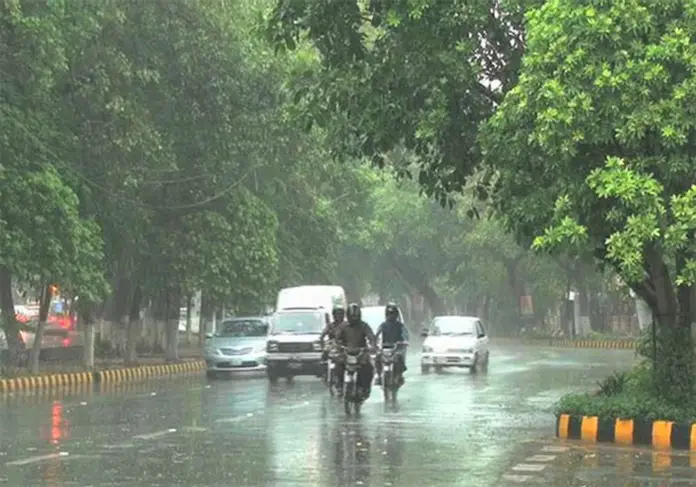The impact of climate change is becoming more visible in Pakistan and other regional countries as an early monsoon season is likely to enter South Aisa with normal to above normal rainfall.
Following the prediction, the National Disaster Management Authority (NDMA) has put all departments concerned on a high alert. The directive came after the South Asian Seasonal Climate Outlook Forum (SASCOF) shared that normal to above normal rainfall was likely over most parts of South Asia.
According to the NDMA, a conference was held in this respect, which was attended by the representatives of federal and provincial governments, PDMAs, Pakistan armed forces, emergency response services, Federal Flood Commission, WAPDA, SUPARCO, irrigation department, FWO, NHA, Pakistan Meteorological Department (PMD), UN agencies and humanitarian networks.
The SASCOF meeting held virtually from April 26 to April 28 was attended by all stakeholders, including the representatives of nine South Asian countries, global and regional climate centers and agencies, UK Met Office, World Meteorological Organization (WMO) and Regional Integrated Multi-hazard Early Warning System for Asia and Africa.
According to the joint statement of SASCOF, above normal rainfall has been predicted over Himalayan foothills, parts of coastal Gujarat, north Maharashtra, Jharkhand, West Bengal, areas along Pakistan-Afghanistan border, Nepal, Bhutan and northern Sri Lanka. However, it stated that there is likely to be normal rainfall during the season in remaining parts within the region.
A Pakistan Meteorological Department (PMD) official told this scribe that the monsoon season is likely to enter the region early due to climate change. “Besides its early onset, there are maximum chances of 10 to 20 percent above normal rainfall in northern parts of Pakistan,” he said, warning of flash floods and landslides in hilly areas.
“All departments concerned are conducting regular meetings regarding rescue and relief operations,” the official said and added that the Pakistan Army had completed all arrangements to lead any operation in case of an emergency not only in northern parts but across the country. Not only northern areas but many parts of Sindh, Punjab and Balochistan may receive heavy rains during the first half of monsoon, he added.
Currently, Pakistan is experiencing 7-11 degrees Celsius above normal temperature due to which most of its areas are in the grip of hot and dry weather.
According to the Met Office, the hot weather is likely to prevail till May 24. During the period, a westerly wave is likely to enter upper parts of the country due to which rain/dust-thunderstorm is expected in Islamabad, Rawalpindi, Chitral, Dir, Swat, Mansehra, Kohistan, Abbottabad, Haripur, Peshawar, Swabi, Nowshera, Kurram, Kohat, Waziristan, Bannu, Mianwali, Sargodha, Khushab, Attock, Chakwal, Jhelum, Hafizabad, Mandi Bahauddin, Sialkot, Narowal, Lahore, Sheikhupura, Faisalabad, Jhang, Toba Tek Singh, Kashmir and Gilgit Baltistan (Astore, Ghizer, Gilgit, Diamir, Hunza and Skardu) particularly during afternoon and evening/nights. Temperatures are likely to subside during the forecast period in most parts of the country.
Meanwhile, the National Drought Monitoring Center stated that a drought-like situation has emerged in most of regions experiencing high temperatures. It stated that due to an abrupt increase in temperatures, a heatwave situation was observed from mid of March till date and land surface temperatures remained very high, which affected the low rainfall region (Sindh, Balochistan, south Khyber Pakhtunkhwa and southern Punjab).
“The heatwave suppressed moisture conditions and resulted in a severe drought-like condition in the Chagai district, whereas moderate conditions have emerged over Kharan, Naushki and Washuk districts of Blochistan,” it said, adding that mild drought conditions have emerged in most parts of Sindh, South Punjab and southern Khyber Pakhtunkhwa.
In its statement, the center warned that drought conditions may exacerbate and affect agriculture, water resources and livestock till mid of June.







